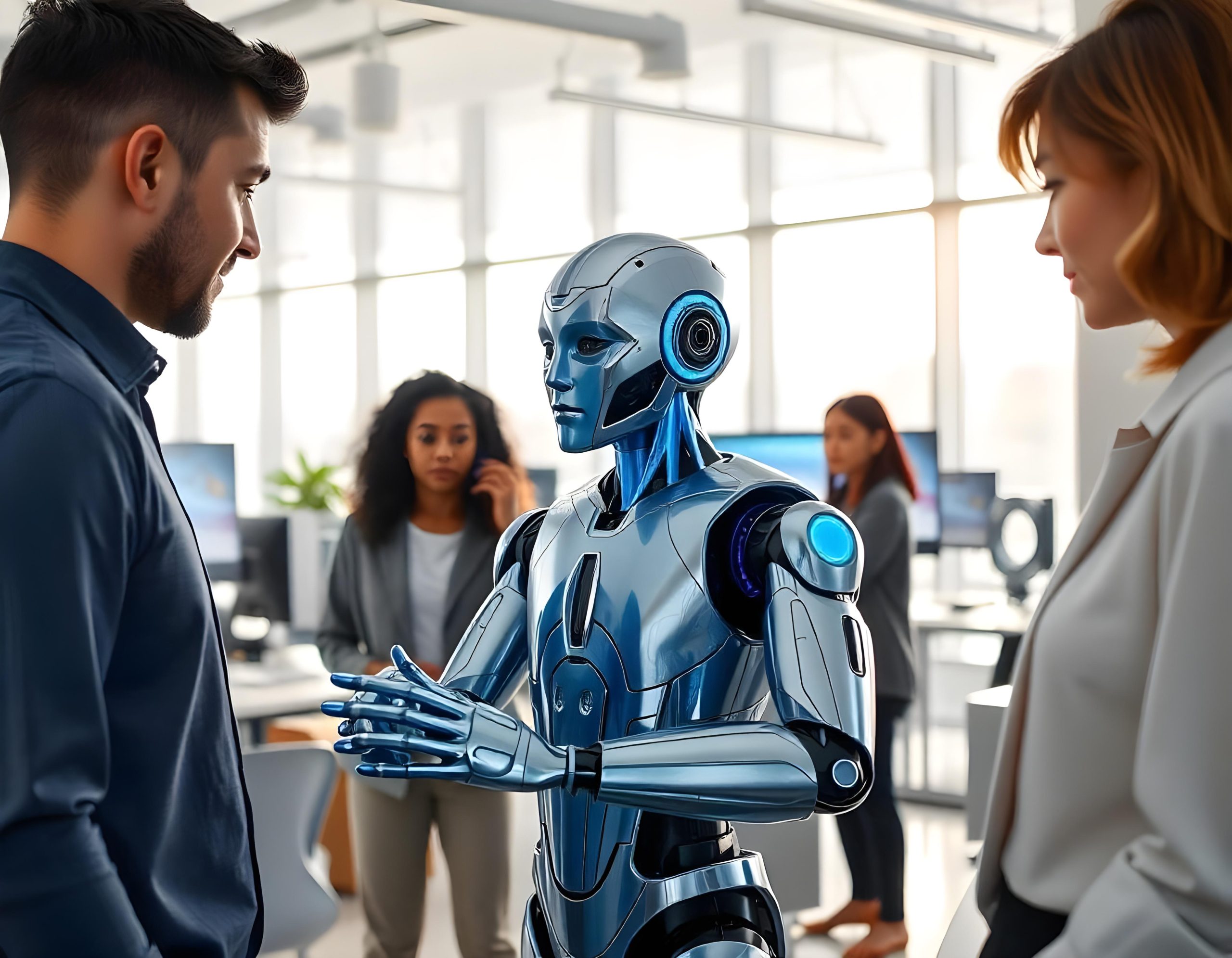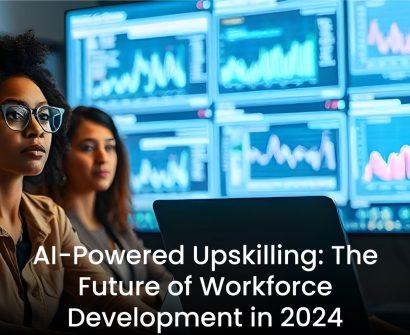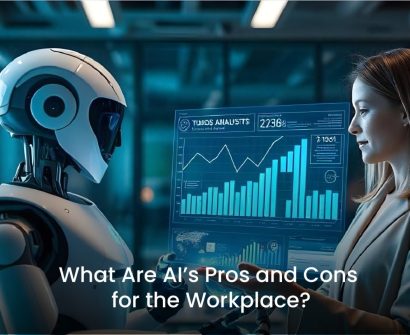
The Rise In Popularity Of AI In Workplace Learning
Companies that wish to remain competitive in the quickly changing business environment of today must welcome modern technologies. Rising AI-powered learning systems are one of the most important developments changing how companies run. These solutions are transforming workplace transformation and employee training, therefore enabling more individualized, scalable, and effective learning. Including AI into employee training might help companies design dynamic, data-driven courses raising worker competency and production.
This blog looks at how AI-powered learning systems are changing business education, the benefits of AI-powered learning systems for the workplace, and the challenges in implementing them.
Understanding AI-Powered Learning Systems
Combining many technologies like machine learning, natural language processing (NLP), and predictive analytics, AI-powered learning systems produce intelligent learning platforms that fit the particular requirements of individual learners. Highly successful in improving employee skills and performance, these solutions are made to offer individualized learning experiences at scale, aligning with the best practices for AI in corporate training to ensure maximum effectiveness and adaptability.
Key features of AI-powered learning systems include
- Personalization: AI examines employee learning preferences and adjusts material to fit certain learning styles, therefore guaranteeing more interesting and successful training.
- Scalability: AI solutions let companies effectively educate big teams by delivering consistent learning experiences throughout a sizable company.
- Adaptability: AI may change the course of learning depending on real-time data, therefore guaranteeing that staff members are always challenged and developing their competencies.
Key Benefits of AI-Powered Learning Systems
Numerous advantages of AI-powered learning systems in the workplace help to greatly increase the efficiency and efficacy of corporate training initiatives. These advantages cover:
1.Tailored Learning Experience
Many times, conventional one-size-fits-all training approaches fail to meet the particular learning requirements of workers. Personalized learning through AI in workplaces may be created, therefore assuring that every employee gets materials appropriate to their function, skill level, and learning style.
2. Continuous Skill Development
The skill sets of workers change with the times as sectors do. Using AI tools for workplace skill development, businesses may start ongoing learning initiatives to enable staff members to remain current with technical developments and industry trends. Real-time feedback and recommendations for more learning made possible by AI-powered technologies help to build a culture of ongoing development.


3. Data-Driven Insights for Management
The capacity of corporate AI learning platforms to gather and evaluate learning data is among their most useful features. This information can give managers understanding of employee performance, knowledge gaps, and general training efficacy. Using these information helps businesses decide on training plans and people development initiatives with greater knowledge.
4. Cost and Time Efficiency
Corporate AI learning systems help to lower the expenses related to conventional training courses. Organizations may cut out administrative overhead, costly resources, and in-person training courses with artificial intelligence. This solution also lets staff members study at their own speed, therefore minimizing the time taken away from their regular responsibilities. Learn how global businesses adopt AI for workforce training.
Challenges in Implementing AI Learning Systems
Although AI-powered learning systems have several benefits for the workplace, companies might run against difficulties using them. Among the typical challenges are:
1. Budget and Resource Constraints
Although learning systems driven by AI are a long-term investment, the first deployment may be expensive. Integrating AI learning systems for small businesses into their training programs might be difficult for startups or companies with limited means. But as AI technology is more widely available, the expenses should drop with time.
2. Ensuring Data Security and Compliance
To provide tailored learning experiences, artificial intelligence systems depend on plenty of data. This begs questions about data protection and adherence to laws. Companies have to make sure their AI-powered learning systems comply with pertinent legislation and are safe to guard corporate data as well as employee records.
3. Overcoming Resistance to Change
The effective use of AI-powered learning systems can be greatly hampered by opposition to embracing new technology. Fear of change or ignorance of the technology could make management and staff reluctant to welcome AI-driven training solutions. Companies should show the long-term usefulness of AI-powered learning systems and give staff members appropriate training and assistance if they are to overcome this opposition.


Real-World Examples of AI in Workplace Training
Already, several companies have begun adding AI into staff training to enhance their programs and get observable outcomes. Here are a few case studies of businesses effectively leveraging artificial intelligence-powered learning systems:
Case Study 1: Retail Sector
Leading retail organizations have used AI tools for workplace skill enhancement to customize instruction for their staff. These businesses guarantee that training is catered to the particular needs of every worker by tracking employee development using AI, therefore enhancing sales performance and customer service.
Case Study 2: Healthcare Sector
Using AI-powered learning systems, healthcare companies are teaching medical professionals on the newest techniques and operations. Simulations and interactive situations produced by AI let medical practitioners practice important skills in a virtual, secure setting.
Case Study 3: Financial Sector
Financial institutions are using corporate AI learning platforms to train their employees on complex financial concepts. These platforms utilize personalized learning through AI to ensure that employees gain the necessary knowledge to stay compliant with regulations and improve financial performance.
Future Trends in Learning Driven by Artificial Intelligence
Future of workplace learning seems bright as AI technologies develop. The following developing trends will help to define AI-powered learning systems going forward:
Employment Growth Forecasts and Predictive Analytics
Predicting employee growth and spotting skill gaps before they become a problem will be increasingly important uses of predictive analytics in AI for staff training. Advanced AI learning technology will allow platforms to give managers information into which employees require more training, therefore guaranteeing that the workforce always has the tools needed to propel success.
Gamification and Immersive Tech like AR/VR in Learning
Gamification and immersive technologies like augmented reality (AR) and virtual reality (VR) together will transform employee interaction with training. Gamified learning experiences made possible by transformative AI learning systems will make training more interactive, interesting, and enjoyable, hence improving information retention.
Conclusion
Systems driven by AI are poised to completely rethink how companies handle staff development and training. From customized learning experiences to ongoing skill improvement, AI-powered learning solutions in the workplace have significant advantages. Businesses must be aware of the difficulties with implementation, including data security issues and financial restrictions, though.
Workplace learning has a bright future, and AI in modern learning environments is essential
in causing this transformation. Companies implementing AI-powered learning systems will be more suited to remain competitive in a market always changing. Adopting these innovative technologies can help businesses guarantee that their staff members have the tools required to thrive in the digital era.
Ready to transform your workplace learning? Explore Neobench’s AI-Powered Learning System Features and start utilizing AI to provide your staff with a scalable, customized, and more effective learning environment.








